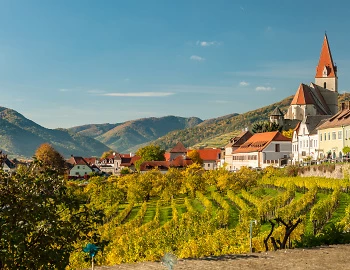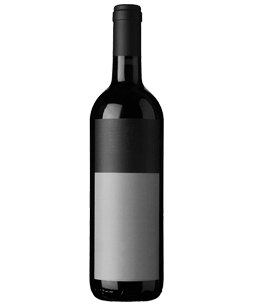Bertholdi (rot) 2018
QWt Burgenland, Gut Oggau, 750 ml

| Grape variety: | Blaufränkisch |
| Producer: | Gut Oggau |
| Origin: | Austria / Burgenland / Neusiedlersee |
| Other vintages: |
Description
Mechtild's husband, is an equal and strong partner to his beloved wife. He is a strong Burgenländer, very versatile, but always earthy and close to nature. Quite the loving and wise grandfather to his grandchildren, who has a lot to tell and is full of energy and joy and joie de vivre. He has made his way, knows all the tricks and still gains in class with increasing age. ************ From the oldest, 60-year-old Blaufränkisch vines, which grow on limestone and gravel soils in a single vineyard of Gut Oggau. The berries are carefully pressed with a 200 year old tree press, spontaneously fermented and matured for 2 years in used 500 litre barrels. Bertholdi is the most traditional and intense representative of the wine family; a full-grown fleshy-spicy Blaufränkisch with a convincing earthy calm and depth. Serious, complex and profound, as befits a head of the family. This wine is unfiltered, unfined and without additional sulphur.
Attributes
| Origin: | Austria / Burgenland / Neusiedlersee |
| Site / vineyard: | Waldäcker, Oggau |
| Grape variety: | Blaufränkisch |
| Label: | Vegan, Certified organic or biodynamic wine |
| Ripening potential: | 3 to 8 years after harvest |
| Drinking temperature: | 16 to 18 °C |
| Food Pairing: | Saddle of lamb fillet with herb jus, Roasted lamb gigot, Roast saddle of venison, Wild specialities, Wild fowl, Wild boar entrecôte with Spätzli |
| Vinification: | partly destemmed, fermentation with grapes' own yeast, stamped by foot, long must fermentation |
| Harvest: | hand-picking, strict selection, in small boxes |
| Maturation: | in tonneau |
| Maturation duration: | 24 months |
| Volume: | 12.5 % |
| Note: | Contains sulphites |
Gut Oggau
What’s the secret of the wines of Austria's Gut Oggau?
Gut Oggau wines are among the best organic wines in Austria, and are produced by Eduard Tscheppe and his wife Stephanie Tscheppe Eselböck on the shores of Lake Neusiedl in Burgenland.
Before Eduard founded the winery, he produced conventional wine with his father in Styria, while Stephanie’s family owned and operated the Michelin-star restaurant & hotel Taubenkobel. They restored the 17th century winery, which had been abandoned for many years. When the restoration was completed in 2007 they started with nine hectares. Today, almost 15 years later, they own 15 hectares and are Demeter certified. The previous owner of the winery was a 92-year-old woman with no children. She hadn’t tended the vineyards for several years. That was an exciting challenge for the young couple. Fortunately, there had been a gap of several years between owners, so the soils had a chance to recover from the chemicals that had been used previously. It was important to Stephanie and Eduard not to change the vineyard, and instead they embraced its natural potential. From the very beginning their approach has been to work with nature and to handle the soil and the vines with great care with the focus on sustainability. They were amazed at just how much character the barrels revealed in the very first vintage; each wine seemed so alive, shining bright with its own personality – and thus the Gut Oggau family was born.
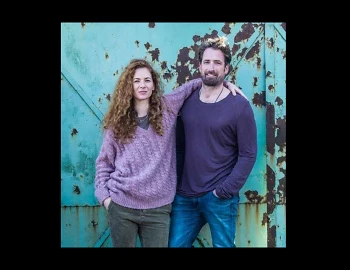
Blaufränkisch
Fanned by warm winds
The Blaufränkisch fits in comfortably in Burgenland and in neighbouring Hungary. Caressed by the warm winds of the Pannonian Plain and protected by hills and mountains, the grapes can fully ripen. They yield fine, dark-berried, well-structured red wine. Depending on taste, the vintner presses them lightly and fruitily, or gathers them in wooden casks into firm, peppery wines. They are predestined for ripeness, and pair excellently with meat and game dishes. The name of this wine is deceptive: in the middle ages, grapes from southern Germany were called “Frankisch”. They were seen as particularly sophisticated. The Blaufränkisch, however, is a native of Austro-Hungary. In Hungary, where it is called Kékfrankos, it even occupies twice as much vineyard space as in Austria. Some producers make wine on both sides of the border.
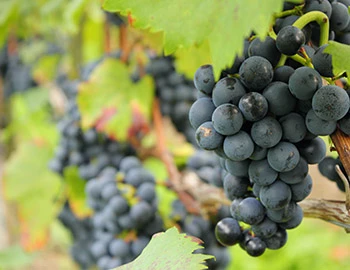
Burgenland
Burgenland: Reds, sweets and other wonders
Burgenland is often referred to in Austria as the new wine world. In fact, wines – with exceptions like the nobly sweet Ruster Ausbruch – were almost entirely unknown here 20 years ago. Today, the most substantial red wines in Austria mature here. And the sweet wine scene is also stronger than ever before. Even the whites – for instance, in the Leitha Mountains – are on the upswing. The basis for this wine wonder are the various terroirs that overlay the land in a complex patchwork.
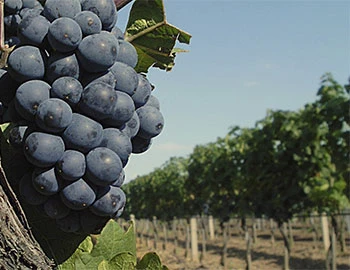
Austria
Austria – Sumptuous culture, accessible to all
Austria is characterized by unbelievable topographical diversity. A flat steppe in the east, forests and hills in the Alpine regions, wetlands and Mediterranean landscapes in the south. This in addition to a rich tradition and even greater love. It’s no surprise that the Romans found joy on this patch of Earth and cultivated wine growing. Austrian wine is not abundant, but it is high quality.
